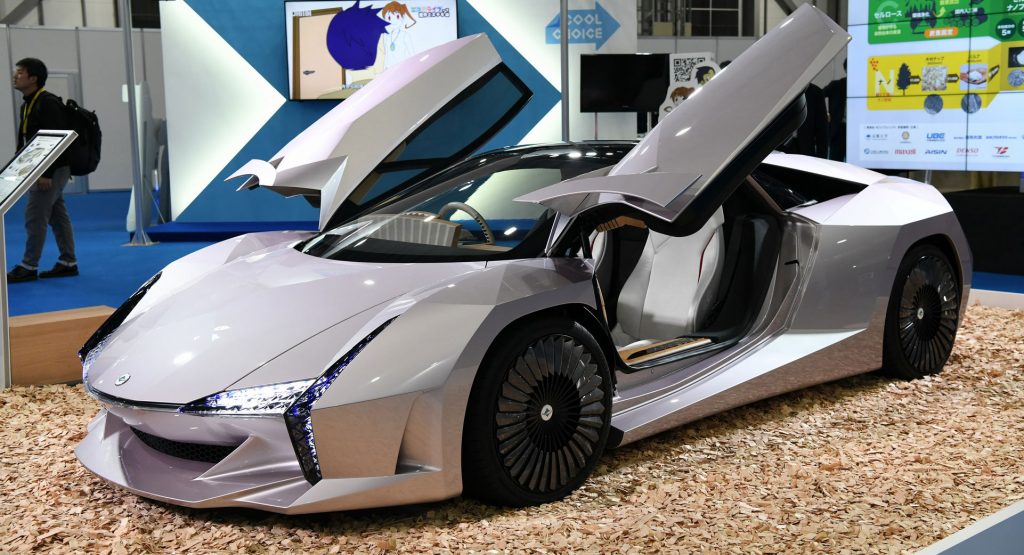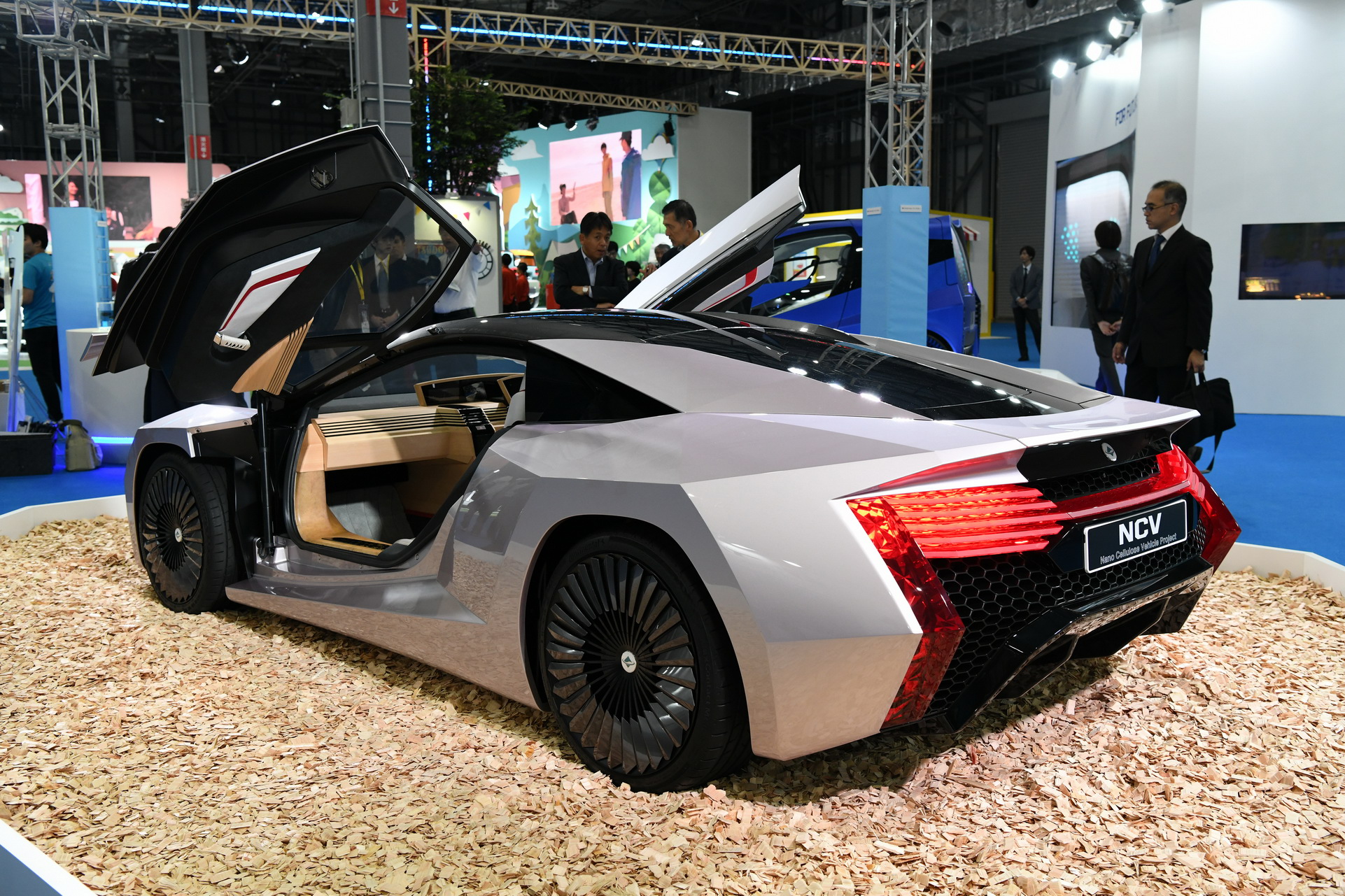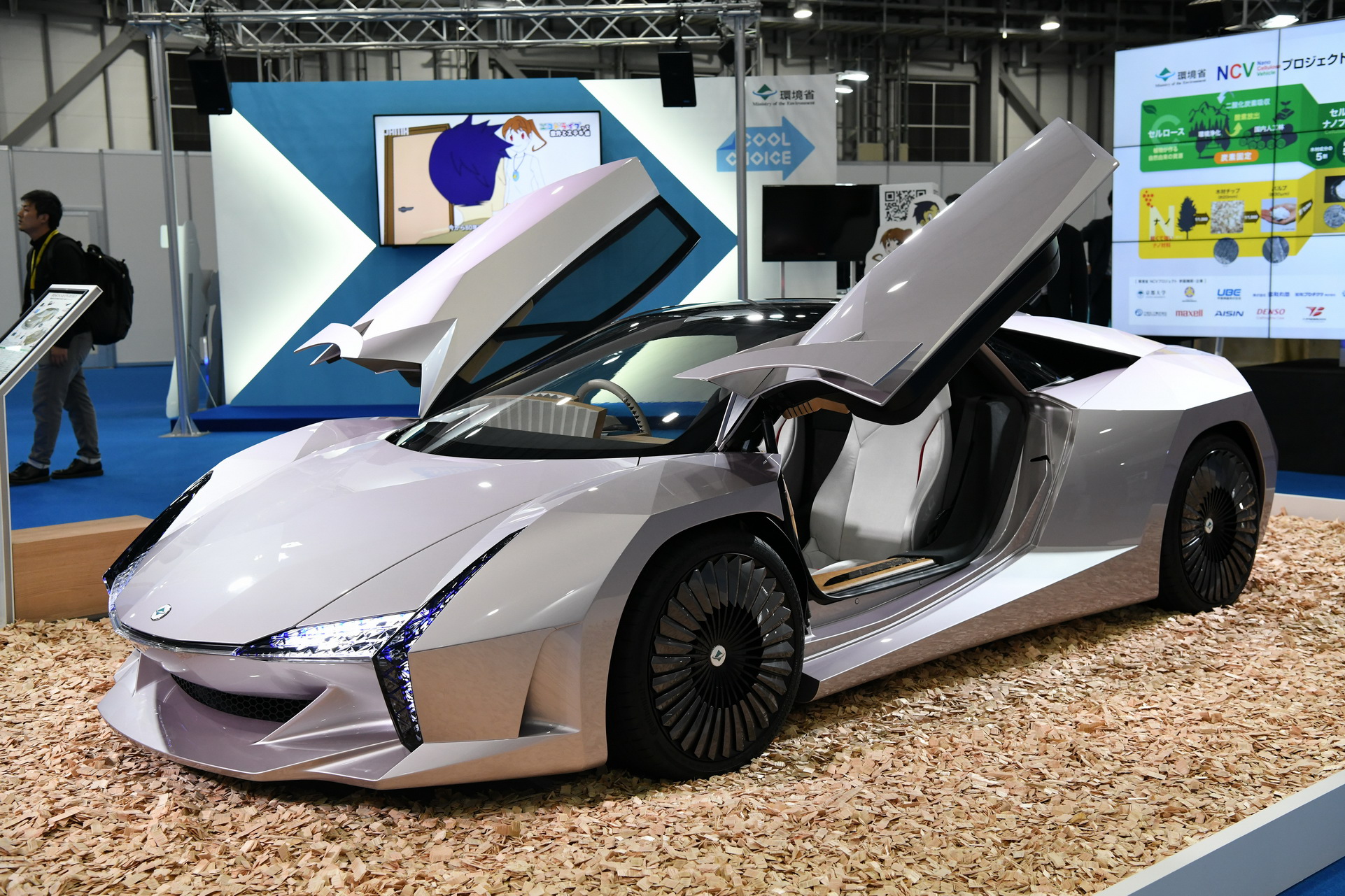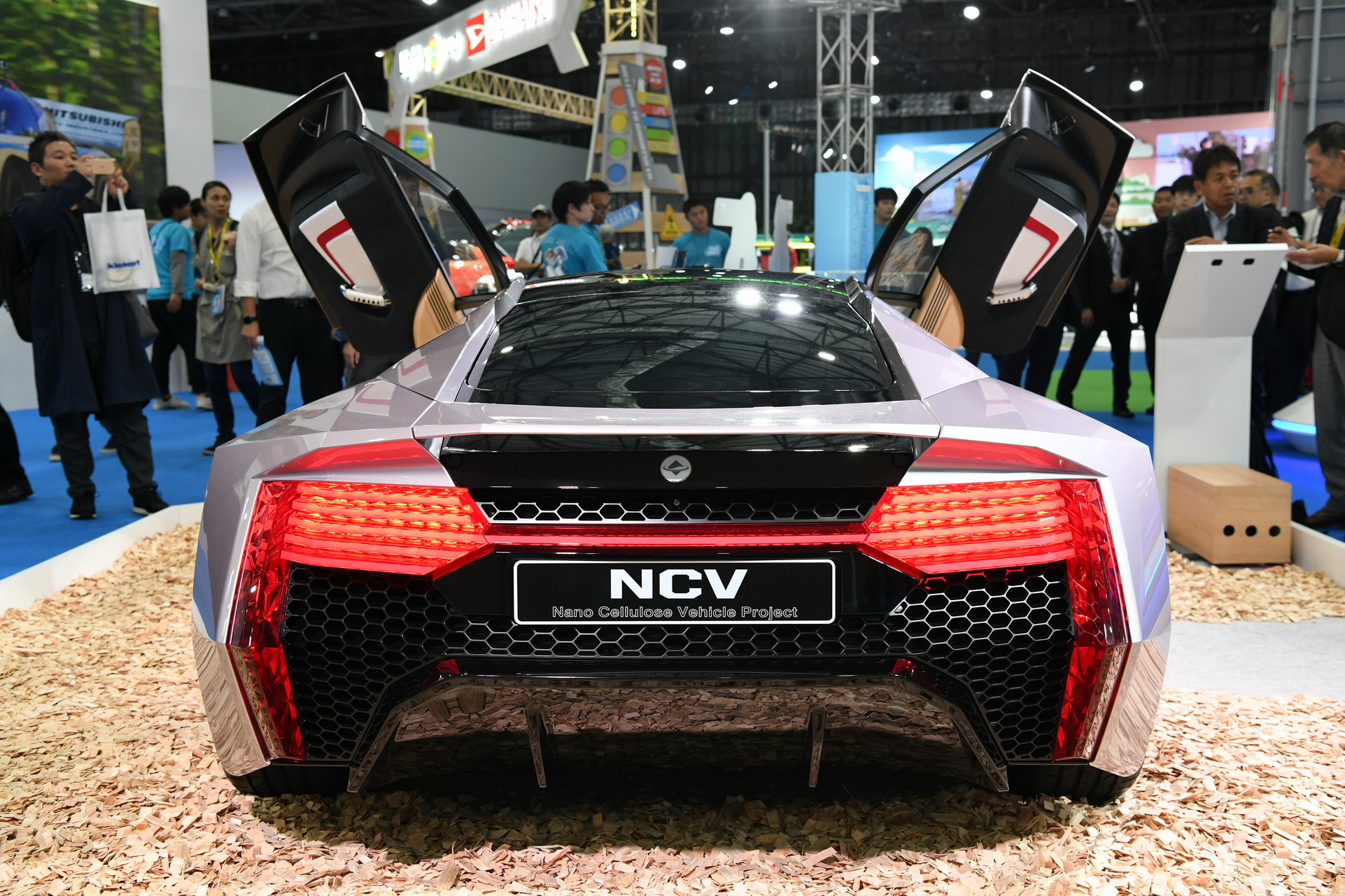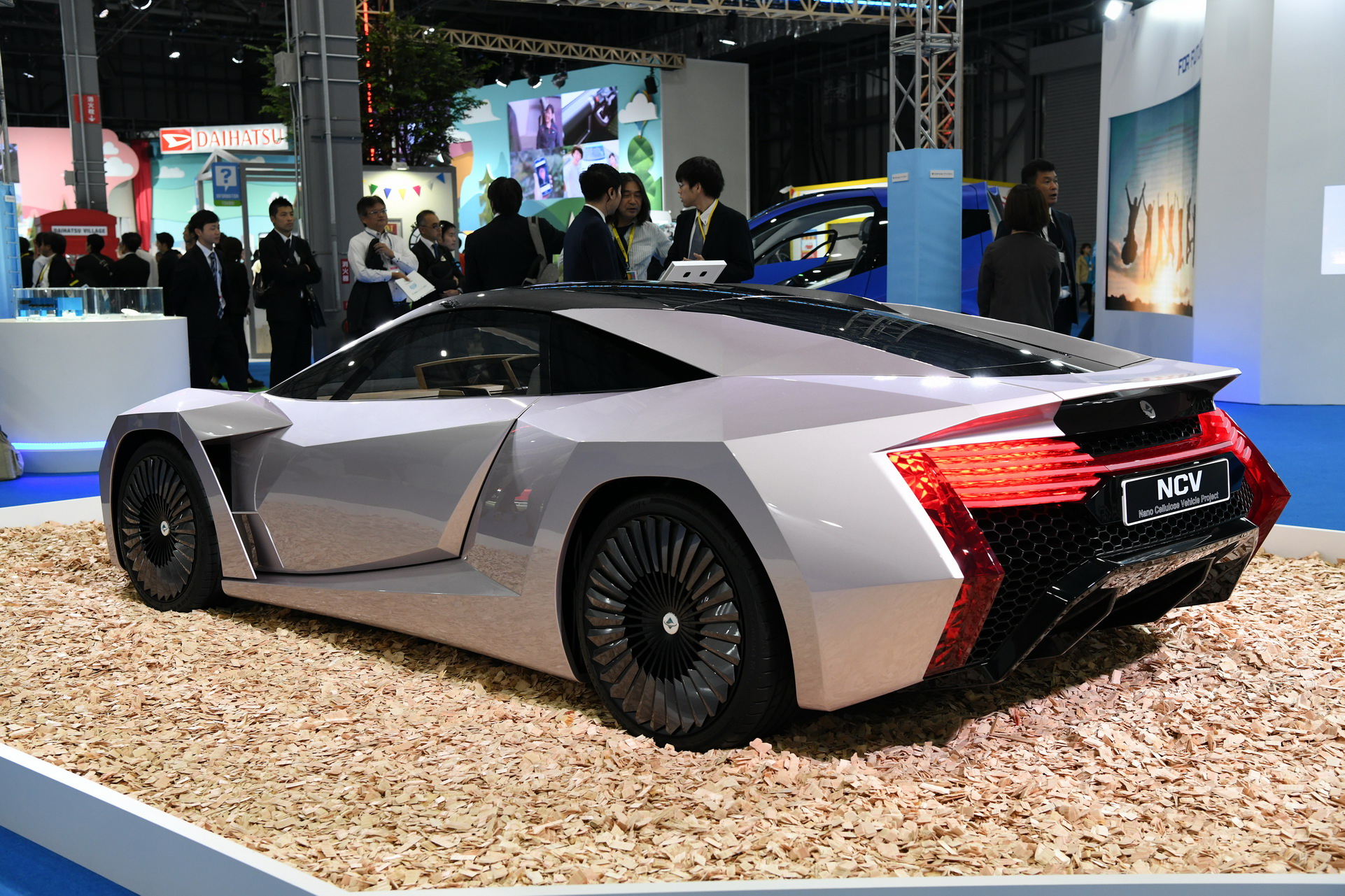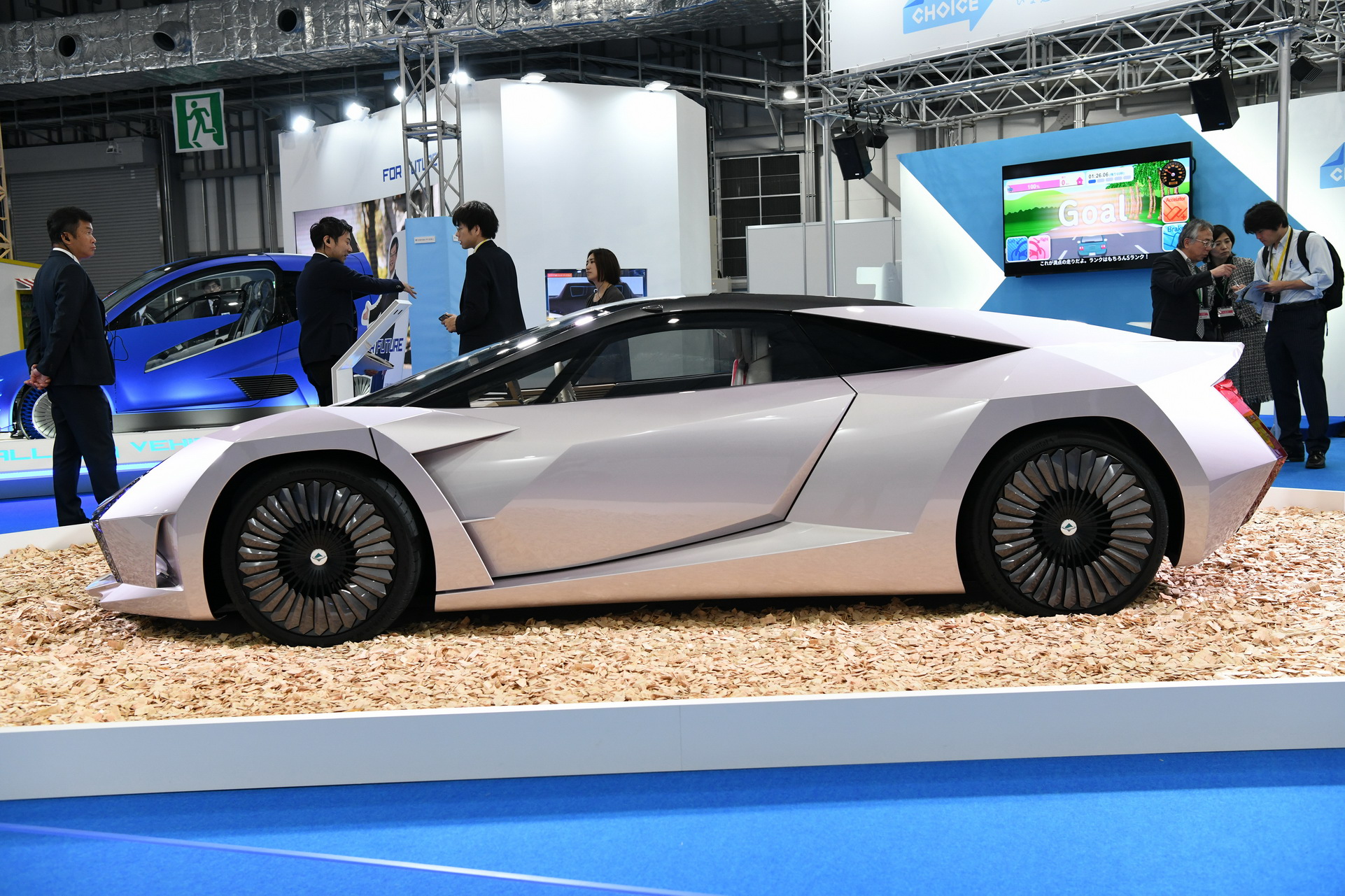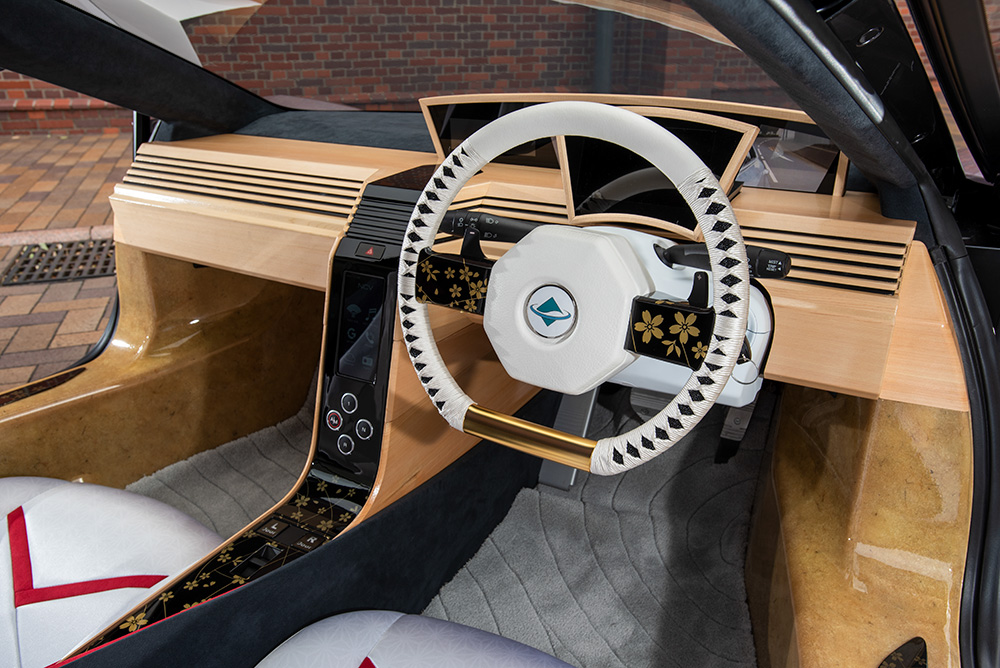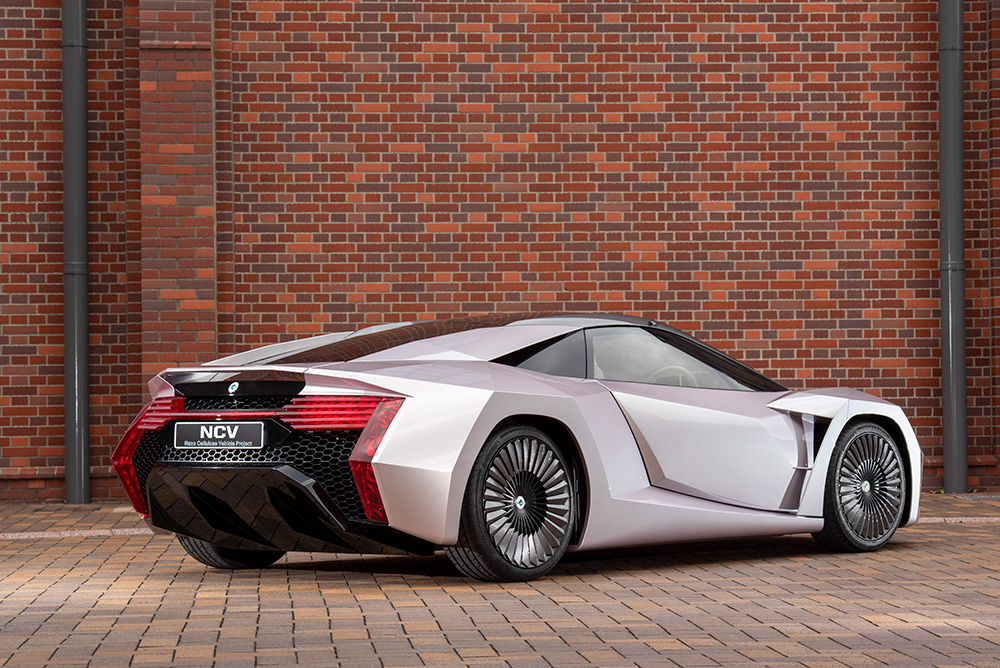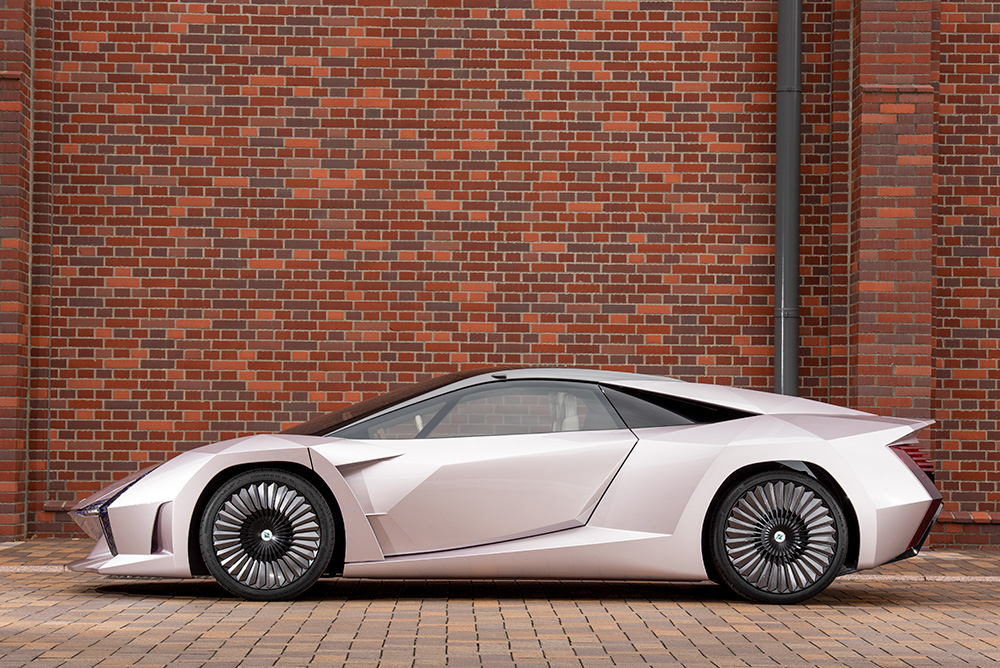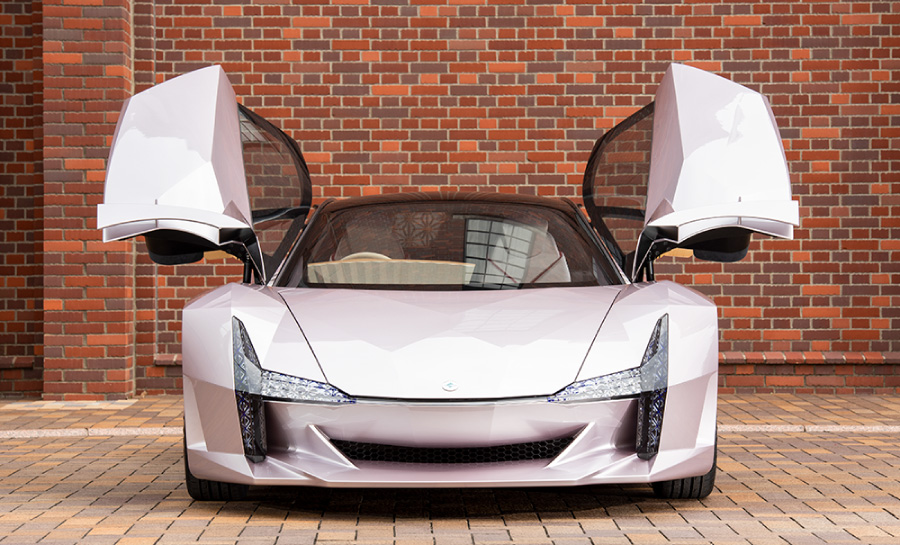This is the Nano Cellulose Vehicle (NCV), unveiled at the ongoing Tokyo Motor Show as a study into the use of cellulose nanofiber (CNF) materials for automotive use.
The vehicle comes from a consortium of 22 Japanese universities, research institutes, and corporate suppliers launched in 2016 by Japan’s Ministry of the Environment.
Cellulose Nanofiber is derived from plants and recycled agricultural waste and has been used across the body, including the doors, roof, and hood. The use of these materials means the car’s shell is up to 50 per cent lighter than one made from more traditional ones. CNF has also been used extensively in the car’s structural tub.
Also Watch: Japan’s Car Industry Is Getting Hit By U.S.-China Trade War
Responsible for the exterior design of the vehicle is Yuzo Niimi from Toyota Customizing & Development, one of the consortium members. The car has a relatively small footprint and at the front there are intriguing headlights as well as a small, sharp front grille. The concept also features butterfly doors, multi-spoke wheels, and a rear dominated by taillights that (bizarrely) remind us of the Chrysler ME Four-Twelve, as well as a large diffuser.
Inside, the Nano Cellulose Vehicle sports panels clad in wood and a two-spoke steering wheel with paddle shifters.
As the concept is a technical showcase, details about its powertrain are limited, although it is thought to feature a hydrogen fuel cell and have a top speed capped at a mere 12 mph (20 km/h).







